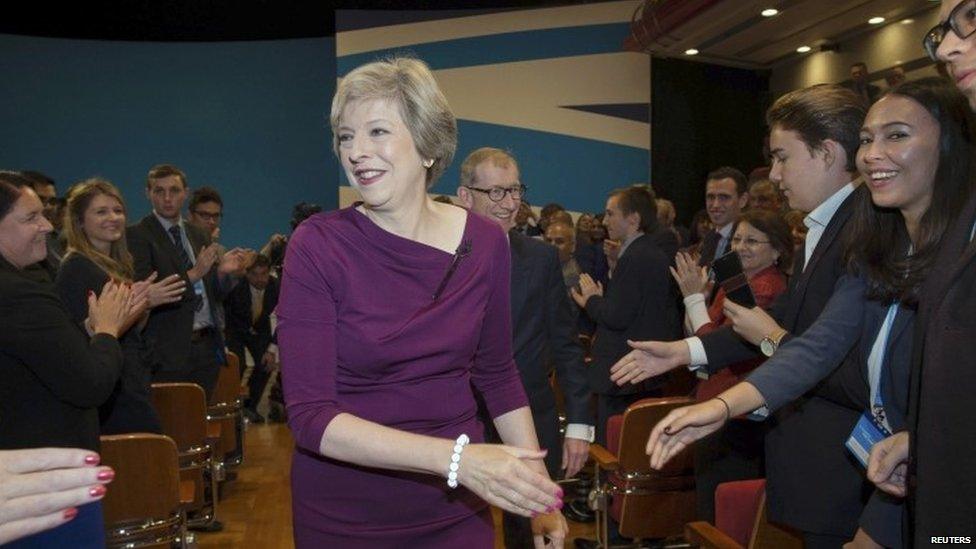Theresa May's new state of mind and what it means
- Published

The new rules. Theresa May's rules - her offer to you, to the country.
If you do the right thing, the government will be on your side. And the state itself can be a force for good.
That's a not a total departure from Tory history, but a change in direction from her predecessor who led a government focused on a smaller state, driven not just by the realities of smaller spending but philosophy too.
Like David Cameron, Theresa May wants to grab the centre ground, but in her view, the referendum result redrew the territory, with voters who expressed their sense of being ignored demanding something else.
So using the European vote as her mandate, the prime minister says it is time for the government to be more active - to be unafraid to poke its nose in when the market fails to provide or when business practice is unfair.
She says she wants to stitch the divisions of the country together - between young and old, London and the rest of the country, rich and poor - rather airbrushing her own senior position in the ruling administration for the last six years.
And Theresa May wants, in a time of cuts, to build a meritocracy. Easy to say to applause in the hall, much much harder to make real.
And with suspicions about the government's attitude towards immigration and ministers' determination to bring back grammar schools too, some of her policies will divide voters rather than pull people together.
In time, Theresa May's real motivations will be judged by what she does in office, not proclaims on a stage. But her beliefs and intent are now clear, and her pursuit of working class voters who may be disaffected with Labour is evident too.
Comparisons with the Tories' first female leader fail to capture the big differences between the two women, and the times. But Margaret Thatcher won elections by persuading millions of working class voters that she was on their side.
From today, it seems Theresa May is intent on doing the same.